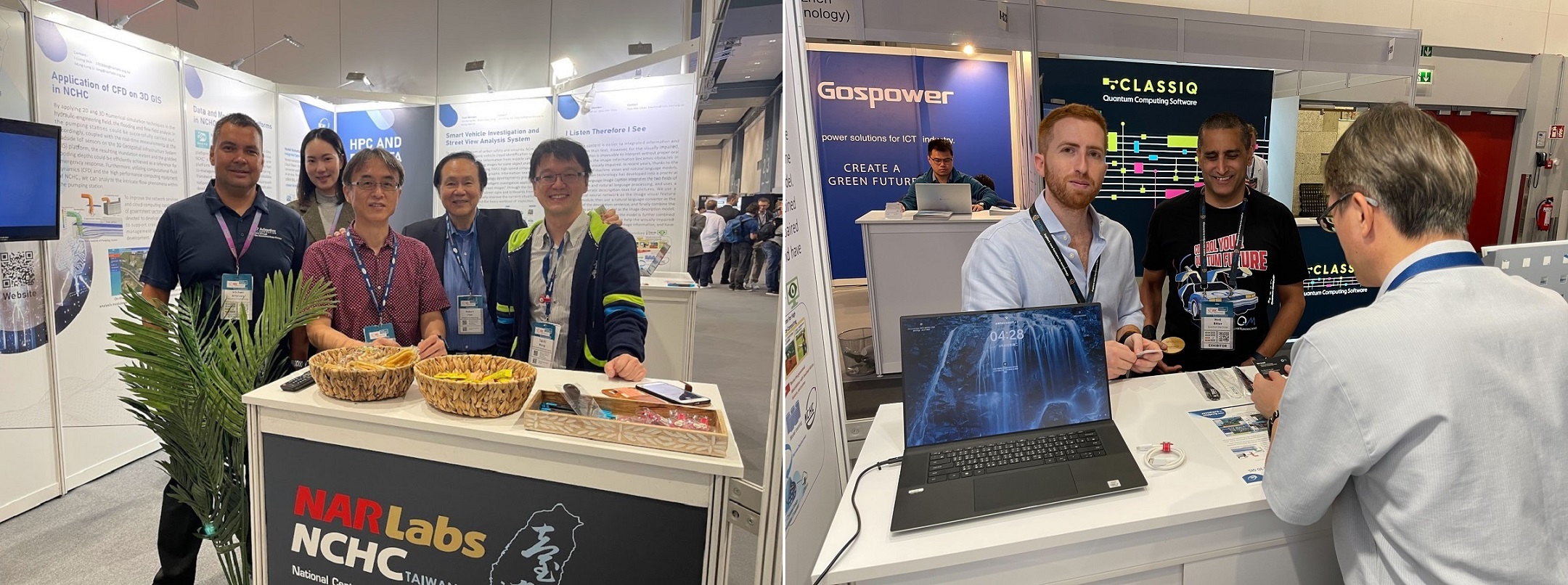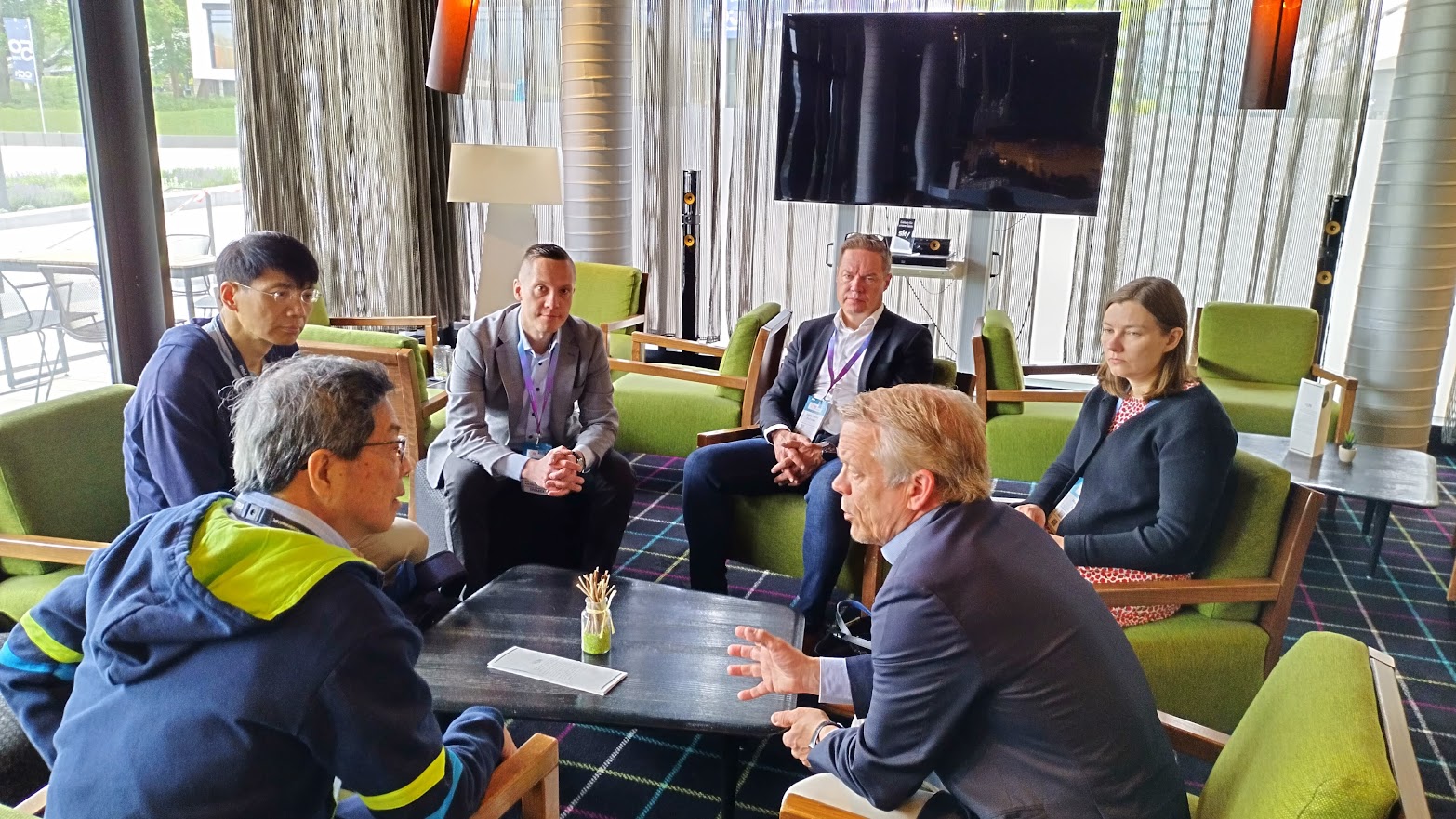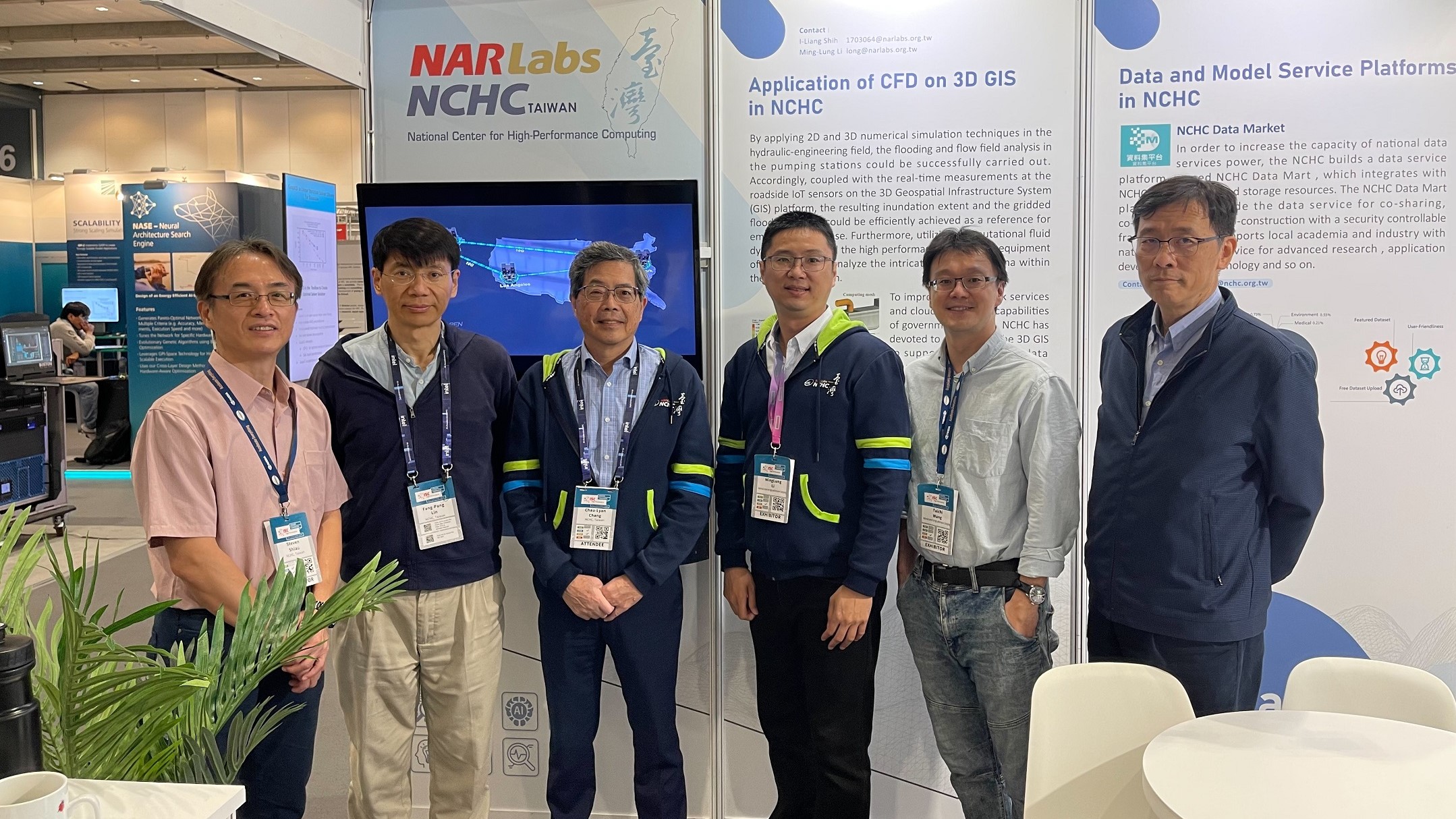The National Center for High-performance Computing (NCHC) exhibited its achievements in 3D water conservancy applications and data services at the ISC23
Publicsh Date:2023.05.25
The ISC conference is the largest supercomputer conference held annually in Europe. After a two-year hiatus due to the pandemic, the conference resumed in 2023, with 159 exhibitors from around the world (11 online and 148 physical exhibitors). More than 3000 academic and business executives from over 60 countries attended the event that featured over 450 sharing sessions and forums. The conference provided the latest information on hardware and software and facilitated research exchanges and collaboration discussions.
The theme for ISC 2023,“IMAGINE TOMORROW," was chosen because humans have always driven for a better tomorrow, and this innovative pursuit is burned in our DNA. Scientists and engineers challenge themselves to realize this pursuit–from finding cures for cancer and understanding climate change to building better aircraft and predicting calamities. High-performance computing (HPC) is used to achieve highly realistic simulations for diverse goals, such as finding cancer treatments, understanding climate change, building better aircraft, and predicting calamities. This magic tool will continue to power scientists and engineers to examine their theories and conduct new experiments. The ISC conference connected users (academia), managers (major supercomputer centers), and software/hardware suppliers who use powerful machines to promote the exchange of HPC visions, ideas, and knowledge. The current top-ranked supercomputer has achieved the exaflops milestone, and now we will move forward a future that fuses together traditional HPC, artificial intelligence, and quantum computing.
Ranking the most powerful supercomputers in the world, the Top 500 Supercomputer List is published twice a year, in June at the International Supercomputing Conference (ISC) and again in November at the Supercomputing Conference (SC). The conferences are important because they bring together representatives from important supercomputer centers or academic research organizations from all across the globe to exchange ideas. The rapid hardware advancements and higher technical maturity in recent years have lifted the speed of high-speed computing hosts from petaflops to exaflops. The rapid development of HPC has spurred the development of various smart life applications. As the only large-scale computing platform and academic research network facility in Taiwan, NARLabs NCHC needs to provide high-quality, high-speed computing and network services to domestic academic research communities. The ISC conference will help the NCHC connect with major HPC research centers around the world and continue to improve its cloud technology capabilities for computing, storage, network and platform integration for today and tomorrow.
NCHC showcased two major themes this year and there were many enthusiastic discussions in its booth.
1. The application development on 3D GIS in NCHC:
NCHC has successfully applied 2D and 3D water conservancy engineering numerical simulation technology to analyze the flooding and flow field of pumping stations. Integrating real-time measurements from roadside IoT sensors on the 3D geographic spatial infrastructure system (GIS) platform, this application can effectively obtain the submerged area and grid flood depth to be used by emergency response. Through the center’s high-performance computing equipment for computational fluid dynamics (CFD), it can also quickly analyze the complex flows inside pumping stations.
2. NCHC Data and Model Service Platforms:
(1) NCHC Data Market: To increase national data service capabilities, NCHC has established this data platform to provide services on data that is jointly built, managed, and shared within a secure and controllable framework. It also provides national-level data services for Taiwan's academia and businesses for advanced research, application development, and artificial intelligence technology.
(2) Model Marketplace - BUILD, TRAIN, AND DEPLOY Models:
NCHC uses virtual computing and cloud storage services on the TWCC platform to build integrated data analyses, build models, and simulate the deployment of model markets. Through more effective data connection and communication, it can also play an important role in artificial intelligence services. This platform can help researchers collect data, create models, manage models, and deploy models.
(3) Civil IoT Taiwan: This platform connects various observation values from major government and academic research organizations and, through big data analysis, produces digital governance policies for promoting digital governance in four major areas: earthquakes, water resources, air quality, and disaster prevention. Our goal is to develop better relationships between human and nature and eliminate the impact and risk of natural disasters.

Photo 1: Researchers from research organizations and supercomputer centers abroad visited the NCHC booth.
(Left: Adaotuve Computing-HPC Cloud Data Company discussed cloud management solutions with NCHC;
Right: Quantum Machine engineers visited the NCHC booth to talk about application development using quantum computers)

Photo 2: NCHC researchers learned from experts at the Finnish CSC Data Center about the architecture and management of the LUMI supercomputer (ranked third in the world and first in Europe).

Photo 3: NCHC staffs at the exhibit booth
 國家高速網路與計算中心
國家高速網路與計算中心
